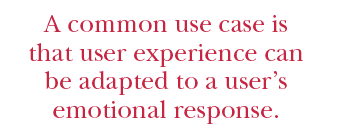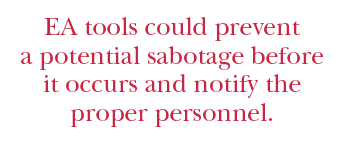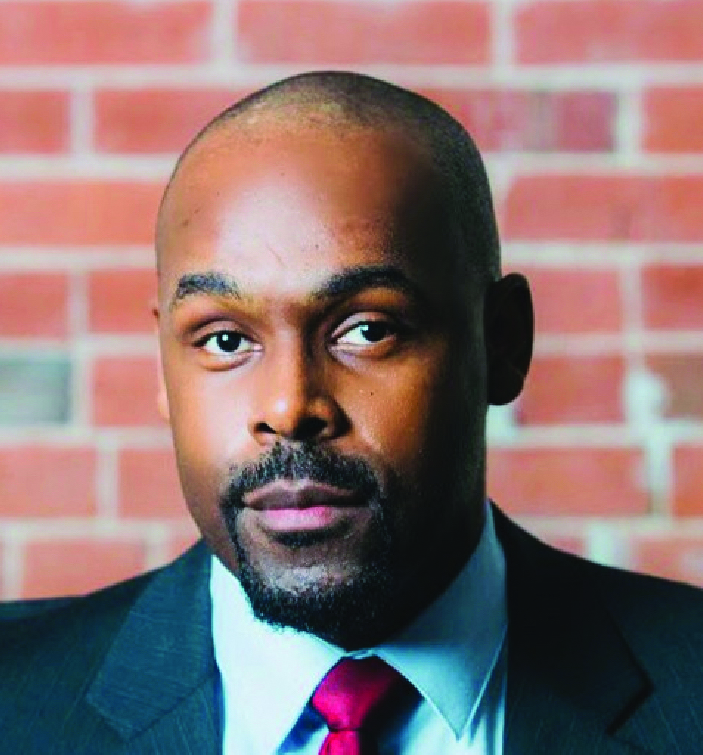By Rozelle Monroe
It’s no surprise to learn that emotions drive all facets of human behavior—from the brands we choose to purchase to the organizations that we choose to work for. Marketers have adopted emotion analytics to influence our consumer behaviors. Can the same technology be leveraged to influence support for diversity, equity, and inclusion (DEI) initiatives?
Extremism in Defense of Liberty
For twenty-eight years, a lone soldier exiled himself to the harsh elements of the outdoors. He was forced to transform his usual gait into an unusual creep while traversing the dense, torrid, and muggy jungles of the U.S. island territory of Guam. Recounting his ordeal, this flustered nomad claimed to have used the cover of darkness to hunt at night. And just the same, he employed the surrounding foliage, not only as clothing but, as concealment from potential threats during daylight hours.
Yokoi Shoichi, a sergeant who served in the Imperial Japanese Army during World War II, told reporters that he had arrived in Guam in 1943 for the second campaign against the United States for control of the Island. Ultimately, Yokoi, along with nine other Japanese soldiers, fled separately into the dark jungles after learning that American forces had successfully captured Guam. Within the cavernous regions of the Island’s murky ecosystem the majority of these soldiers met their eternal fate, thus freeing them from the harrowing ordeal. However, Yokoi somehow survived the brutal elements, wildlife, and isolation of the jungle. And in January of 1972, he was discovered by two local men who were retrieving their shrimp traps near a small river basin.
As the story goes, U.S. planes dropped leaflets declaring peace in the jungle before and after Yokoi fled. But, proud and patriotic, he did not trust the Americans. So instead of surrendering (accepting the outcome), he opted to fight against a perceived U.S. occupation (resist change), by hiding in the marshes of Guam for nearly three decades.
Consequently, some may ask, how might such a story be relevant to the strategy of employing diversity, equity, and inclusivity by using emotion analytics (EA) to help us understand ways we can make it more effective, and less nominal? After all, some may argue that the actions of the Japanese soldier were beyond extreme. But were they? To what lengths and depths are you willing to go to gain or sustain your freedom? Or let me put it another way: Are you free because someone said that you were? What have you done to garner universal freedom?
Freedom Without Power is a Mirage
The American abolitionist Frederick Douglass once said: “Power concedes nothing without a demand. It never did and it never will.” According to CNN Money, millennials (born 1980–1999) and Gen Z (born 2000–present) are historically the most diverse. Out of 87 million, only 56 percent are white, compared to 58 percent white of Generation X (born 1965–1979), and 72 percent white Baby Boomers (born 1946–1964).
Why is this important? Well for one, it shows a trend toward a more diverse culture. We live within a society that has not always been so tolerant of those who do not find themselves a part of the dominant paradigm structure. Gatekeepers have long decided which groups to include and exclude, both in terms of equality representation and gender-exclusive language.
Considering this, as we strive to make change, it must register that the many institutions, systems, coalitions, laws, ideas, and the very language with which we choose to communicate all have been tainted with vestiges of an entitled and privileged perception of the way things ought to be! It will take more than numbers, I say. . .more than a bowl of alphabet soup to shake things up, and then shape things up. This is why we, as communicators, play such an important role in fostering inclusivity.
Moreover, statistics are great at helping display the bigger picture and putting complex things into perspective. But numbers alone are not going to necessarily solve the remnants of non-diversity, inequity, and exclusivity, all which seem to die hard; still waters do run deep! Demanding a paradigm shift is necessary if DEI is to be effectively realized.
White-Dominant Culture: Patronage or Patrimony
I have some pretty close relationships with those who benefit from white privilege, but who are committed to the struggles of fostering change in our society through DEI, whenever and wherever possible. And for every one of these friends that I have, I imagine that there are at least ten of their counterparts who enjoy the same privilege, but who embrace the corrupted inheritance. It works to their advantage to continue with business as usual.
While some diversity initiatives and programs have engendered hope, many are met with skepticism. Sadly enough, most outcomes have supported the latter, giving all the more credence to the postmodern idealism of this age. And so, it seems that we as an entire culture—the American culture, that is—are faced with a gut-wrenching problem. Do we roll-up our sleeves and commence to working, struggling, and fighting, “. . .by any means necessary?” Or do we accept the status quo, along with the long-standing ideas and policies that have impeded progress, still waiting for incremental change?
It’s been two decades since Wall Street power houses like Morgan Stanley and Merrill Lynch adopted highly publicized diversity programs. However, these programs were created not with the goal of true diversity, but rather to fulfill requirements stemming from sex discrimination lawsuits of $54 million for the former and $100 million for the latter. Are we not concerned with the intentions behind an action, a program, or an initiative? Or are we appeased by diversity programs that exist in name only, rather than considering the results?
 Leveraging Big Data and Artificial Intelligence
Leveraging Big Data and Artificial Intelligence
It is possible to effectively immerse a culture into the waters of DEI. Looking at universal human behavior through the lenses of emerging technologies, we find suitable resources for equipping us with solutions that could effectively address the contagions within the social fabrics of the communities in which we occupy. These technological tools and resources can perhaps help us to go beyond individuals’ comfort levels or pessimism, and take DEI initiatives to the next level.
Emotion Analytics (EA) is underscored to be a promising tool. In the book, Platform, Protests, and the Challenge of Networked Democracy, Susie Currie Sivek describes EA as follows:
“‘Emotion analytics’ as a term can encompass both hardware and software tools used to detect, identify, respond to, and even modify audience emotions. Though this term and the technologies it represents are not yet widely known to the general public, these tools are already becoming widely implemented throughout consumer electronics, digital publishing and social media, retail stores, and private homes.”
Through the continuous research efforts of academia and industry, a number of companies have become early harbingers of this technology, as this has proved useful to fine-tuning and refactoring the tool. A common use case is that user experience can be adapted to a user’s emotional response.
A computer outfitted with an EA tool could be operated by a user; as the user interacts with the machine, using algorithms that emulate a human’s ability to detect emotions, the computer adjusts user-experience based on the emotion being presented. In essence, if a user becomes angry and decides to post inflammatory language on a social media website, the computer can impede the negative emotional response. If a company worker, turned disgruntled employee, happens to have admin rights for an area of a computer network that grants him access, EA tools could prevent a potential sabotage before it occurs and notify the proper personnel.
Many devices that have the capacity to facilitate many of the demands of EA tools: PCs, laptops, mobile devices, wearables (health-based), smart home assistants, smart home devices (dryers, washers, refrigerators, etc.). These devices all can be used to analyze human behavior. And because almost every person interacts with one or more, if not all of these devices, there would be no shortage of data from which useful metrics can be obtained. This, in turn, would allow technologists, UX personnel, and designers alike to develop content that appeals directly to human emotion.
 Using Technology to Affect Cultural Change
Using Technology to Affect Cultural Change
Why not use this technology to affect change in our cultural ecosystem? Technology has presented many ways in which to more effectively monitor the results of DEI in environments. Additionally, content could be developed that would encourage positive behavioral change. Using EA technology could influence the cultural change needed to implement an effective and more permanent form of DEI in organizations.
 ROZELLE MONROE (drm245@txstate.edu) Upon leaving his last job assignment as a civilian software test engineer for the U.S. Army, Rozelle Monroe had become discontent, disenchanted, and dissatisfied with the work conditions in which he kept finding himself, and so he began searching. And in a bizarre twist of fate, this longtime technophile found himself transitioning into the new role of graduate student into the MATC program at Texas State University in San Marcos, Texas for a career remediation. He holds a BS degree in Computer Science from North Carolina Agricultural & Technical State University in Greensboro, North Carolina.
ROZELLE MONROE (drm245@txstate.edu) Upon leaving his last job assignment as a civilian software test engineer for the U.S. Army, Rozelle Monroe had become discontent, disenchanted, and dissatisfied with the work conditions in which he kept finding himself, and so he began searching. And in a bizarre twist of fate, this longtime technophile found himself transitioning into the new role of graduate student into the MATC program at Texas State University in San Marcos, Texas for a career remediation. He holds a BS degree in Computer Science from North Carolina Agricultural & Technical State University in Greensboro, North Carolina.
It is passion for technology, love of people, and his drive to bring change to the ideas of the underrepresented regarding technology that these experiences are shared in this article. His hope is that by sharing his experience, awareness will give birth to motivation and courage, where technology will become more accessible through demand, and more appealing through an ability to change and transform lives.
REFERENCES
CNN Money. n.d. “Millennial Generation is Bigger, More Diverse than Boomers.” Accessed 7 April 2021. https://money.cnn.com/interactive/economy/diversity-millennials-boomers/.
Dobbin, Fran. & Kalev, Alexandria. July–August 2016. “Why Diversity Programs Fail: And What Works Better.” Harvard Business Review. Accessed 7 April 2021.
https://hbr.org/2016/07/why-diversity-programs-fail
Jones, John & Trice, Michael, eds. 2020. Platform, Protests, and the Challenge of Networked Democracy. Cham, Switzerland: Palgrave MacMillan.
Wikipedia. n.d. “Yokoi Shoichi.” Accessed 7 April 2021. https://en.wikipedia.org/wiki/Shoichi_Yokoi.


